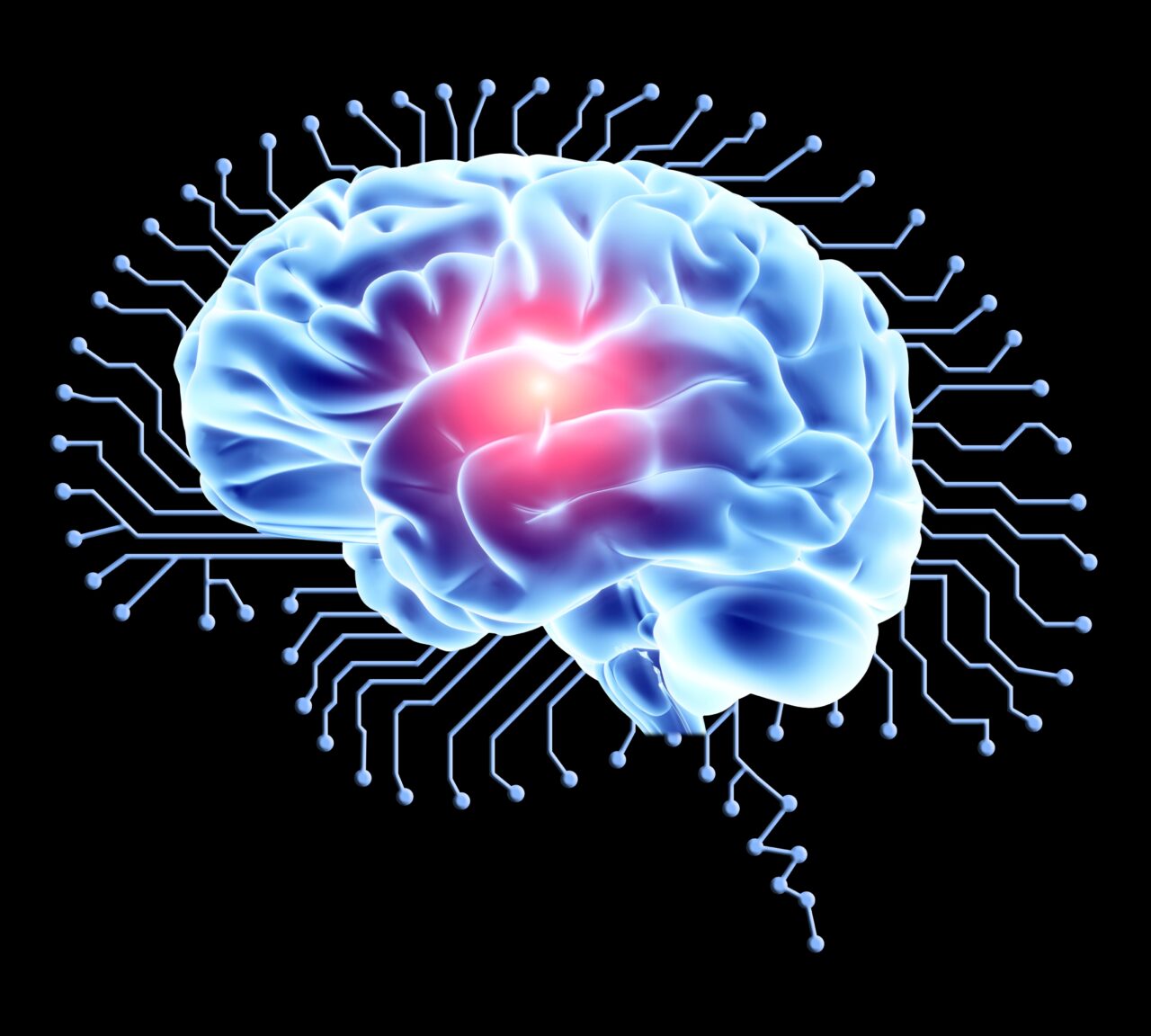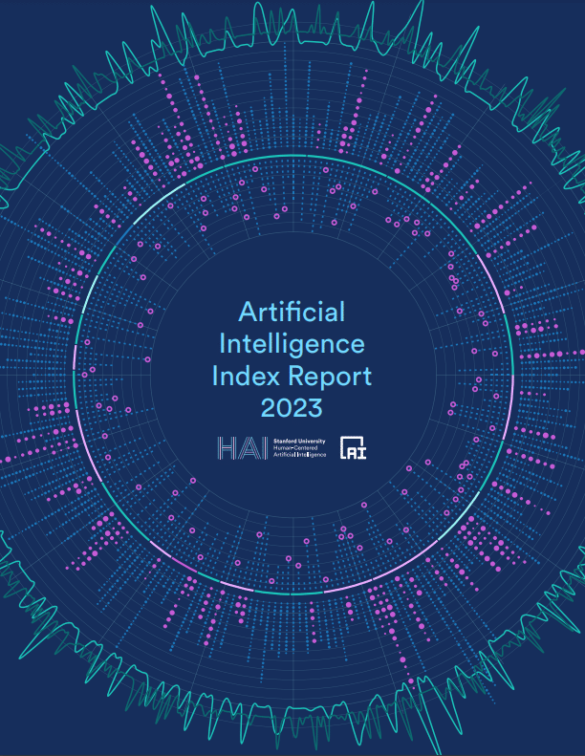
From technical performance to ethical doubts, from economic development to global environmental impact, theArtificial Intelligence Index Reportpublished by Stanford University, and now in its sixth edition, describes the state of the art of artificial intelligence in eight powerful chapters. The aim is not only to provide insiders with the most detailed and up-to-date data possible, cross-referencing different points of view and expertise, but also and above all to update policymakers, journalists and even the general public on the tangible progress and prospects of this tool that has suddenly (or so it seemed) burst into everyday life and public debate.
We talked about it with Loredana Fattorini, researcher at Stanford University's Institute for Human-Centred Artificial Intelligence and Guest Scholar at the IMT School, as well as coauthor of the AI Report.
2022 was the year in which the general public 'realised' the existence of artificial intelligence, its enormous potential, and perhaps its risks. Has the progress of artificial intelligence really been as explosive as it appeared to the uninitiated, or has it been a slow and steady acceleration that we did not realise?
2022 was a very important year for the public perception of artificial intelligence (AI). Thanks to the launch of numerous systems, the frontiers of this technology have been redefined and the doors have been opened for a variety of uses, even by non-specialists in the field. In particular, numerous models of advanced generative artificial intelligence have dominated the scene. Starting with simple instructions in human language, known as 'prompts', they are able to generate images, text, video or code. Examples of the models that have become popular include DALL-E 2, Stable Diffusion, and Midjourney, which have demonstrated revolutionary capabilities in the combined generation of text and image, and Make-A-Video, an innovative system for the creation of video content based on text input. In addition, the release of chatbots such as ChatGPT offered new and engaging ways of interacting with AI. These developments have not only confirmed the rapid advancement of the discipline, but have also stimulated the public's imagination regarding the possible applications of AI.
However, the narrative of explosive growth does not represent the whole picture. In the history of artificial intelligence research, there have been several key moments that have pushed the field forwardeven if they have come less to the attention of the general public. For example, in 2012 the success of the convolutional neural networks in the ImageNet Challenge catalysed enormous interest in the scientific community and led to large investments in AI research and in particular in the branch of Deep Learning. This event marked the beginning of a new era for AI, with significant improvements, for instance in image recognition capabilities and high-quality machine translation. Since that turning point, developments in AI research have continued to grow at a fast pace. The emergence and evolution of large language models such as GPT-3 and BERT have since greatly expanded the frontiers of natural language processing, demonstrating linguistic capabilities previously unimaginable for a machine. This perception of accelerated progress is thus fuelled by the combination of several factors such as increased computing power, the availability of large datasets and continuous algorithmic advancements. In conclusion, while it might seem to the general public that AI has made 'explosive' progress recently, in reality these advances are the result of years of accumulated research. However, it is undeniable that developments are now taking place at an impressive pace and with unprecedented impact.
What are the tasks on which AI is most advanced?
Artificial intelligence has made significant progress in a wide range of tasks, and in some of them it has even surpassed human capabilities. One field in which AI has certainly demonstrated exceptional capabilities is that of image recognition. Convolutional neural networks, a subcategory of Deep Learning models, have revolutionised this field. In 2012, as already mentioned, AI demonstrated impressive capabilities in the ImageNet Challenge, a benchmark for image recognition, reaching and in some cases surpassing human performance. Another field in which performance has advanced is certainly that of the strategy games: AlphaGo, developed by DeepMind, surprised the world in 2016 when it defeated one of the world's best players in Go, a game traditionally considered too complex for machines because of its wide range of possible moves. Then there is the natural language understandingmodels such as BERT and GPT-3 are now able to understand and answer questions, complete sentences and even write essays, demonstrating a remarkable mastery of human language. And finally, so-called generative AI is one of the most exciting fields of artificial intelligence at the moment. With the ability to synthesise information and create new information, these AIs can produce very realistic texts, images and videos.

And those on which you still struggle?
I limitations mainly concern the execution of tasks requiring deep reasoning and generalisation skills between different domains. While AI may be formidable in recognising patterns in large datasets or solving specific problems for which it has been trained, it often struggles with tasks that require deep, logical reasoning. For example, an AI model may be able to solve complex mathematical problems, but may have difficulty understanding and answering ethical questions that require reasoning and interpretation. Another area in which it struggles is that of extraction and generalisation. One of the great advantages of human intelligence is our ability to learn concepts in one domain and apply them in another, i.e. to generalise. AI tends to be highly specialised. For example, a model that is excellent at playing chess may have no competence in playing Go unless it is specifically trained to do so. Finally, AI still lacks intuition and empathy: while AI can to a certain extent simulate human interactions, it still struggles to truly understand emotions.
Do the fears we hear repeatedly: that artificial intelligence will put people out of work, make professions disappear? What about those that it will become 'self-aware' and wipe us off the face of the earth?
Regarding the impact on labour, the history of technological innovation shows us that every major revolution brings with it a transformation of professions and the labour market. Taking the electricity revolution as an example, we have seen how it made many professions related to previous technologies obsolete, but at the same time gave rise to new jobs and opened the way for entire sectors that did not exist before. Similarly, AI could effectively render some professions obsolete, especially those with highly repetitive tasks. At the same time, AI could also create new jobs and opportunities, such as the development, maintenance and supervision of AI systems, as well as roles that we may not yet imagine. The real issue is not so much the elimination of jobs but rather the transition and how to ensure that people are trained and prepared for the new emerging roles and to integrate these technologies to make their work more efficient. The concept of a 'self-aware' AI is the subject of much discussion, both in the scientific community and in popular culture. Most experts in the field of AI agree that we are still a long way from creating a truly 'self-aware' machine in any human sense of the term. At the moment, AIs are advanced tools that perform specific tasks for which they have been trained, without any sense of consciousness. However, there are different schools of thought regarding potential future risks. Some experts argue that we should be cautious about moving towards superhuman-level AI, while others believe that such concerns are exaggerated or unfounded. What is indisputable is the need for continued debate, ethical guidelines and responsible research in the field of AI to ensure that emerging technologies are developed safely and in the service of humanity.
What problems does artificial intelligence have from an ethical point of view?
Many of the ethical issues arise from the nature of the data with which the models are trained, and the specific uses of AI in various contexts. AI models are often trained on large datasets that reflect existing biases in society. For example, there have been cases where facial recognition systems have shown racial or gender bias, with better performance on certain ethnicities than others. This is particularly problematic when these systems are used in sensitive contexts such as surveillance or personnel selection. With the ability to analyse huge amounts of data, AI also has the potential to violate the privacy of individuals. And there are concerns about how AI can be used to monitor, track and even predict behaviour without the informed consent of the individuals involved. Then, as AI becomes increasingly integrated into everyday decisions, the question arises: who is responsible when an AI system makes a wrong or harmful decision? Finally, the ability of AI to generate realistic content, such as images, videos and text, has raised concerns about misinformation and manipulation. For example, the 'deepfakes'Videos manipulated by AI to show individuals saying or doing things they never did pose a threat to the veracity of online information.

Ours - fears included - is a Western outlook, but not the whole world looks at developments in artificial intelligence in the same way: who is more and who is less confident?
Global attitudes towards artificial intelligence are extremely varied and depend on a number of factors, including culture, education, experience with the technology and perceived economic and social benefits. According to a2021 survey by LLoyd's Register Foundation and Gallupp, the perception of artificial intelligence varies considerably between regions. In East Asia, for example, optimism prevails, with a ratio of 4.4 to 1 among those who think that AI will mainly have a positive impact compared to those who think the opposite. This could reflect a greater familiarity and adoption of the technology, or a stronger focus on the economic potential that AI can offer. East Africa, North Africa and Southern Africa, on the other hand, show more pessimism. In fact, many see AI as a potential threat rather than a benefit. A survey IPSOS 2021 showed equally significant differences in the perception of the benefits of AI. China, Saudi Arabia and India were among the most optimistic countries, with 78 per cent, 76 per cent and 71 per cent of participants respectively seeing more advantages than disadvantages in the use of AI-based products and services. These results probably reflect a combination of rapid technological development, government ambitions and a growing middle class more inclined to innovation. In contrast, countries such as the United States, France and Canada show more caution or even scepticism. Only 35 per cent of American participants, for example, think that products and services using AI have more advantages than disadvantages. This discrepancy could stem from concerns about privacy, employment or social risks.
These surveys reveal that there is no single vision of AI; rather, perceptions vary according to specific cultural, economic and social contexts. It is crucial to understand these nuances to ensure that the development and adoption of AI occurs in a way that is beneficial and acceptable to all.
Are there examples of countries that have already regulated the uses of artificial intelligence?
Yes, several countries have done so or are doing so. In April 2021, the European Commission proposed the first AI framework for the entire European Union, with the aim of assessing and classifying AI systems according to the potential risk they may present to users. Depending on the level of risk identified, AI systems will be subject to varying degrees of regulation. Once ratified, these rules will be the first of their kind globally, establishing the EU as a leader in responsible AI regulation. However, the overall picture shows a strong increase in legislative interest, as shown by the analysis of theAI Index of AI-related laws from 2016 to 2022. In 2022, 37 AI-related bills were passed globally. The United States led the list with nine bills, followed by Spain and the Philippines.
In addition to legislation, a country can outline its vision and goals for AI through a national strategy. This strategy is an action plan developed to define how the country will approach the development, adoption and management of AI. L'AI Index recorded that, as of 2017 with Canada, 62 countries have released their national AI strategies. In 2022 alone, Italy and Thailand announced their AI strategies. These strategies reflect how each nation intends to support AI, maximising the benefits to society and managing the associated risks.
Chiara Palmerini